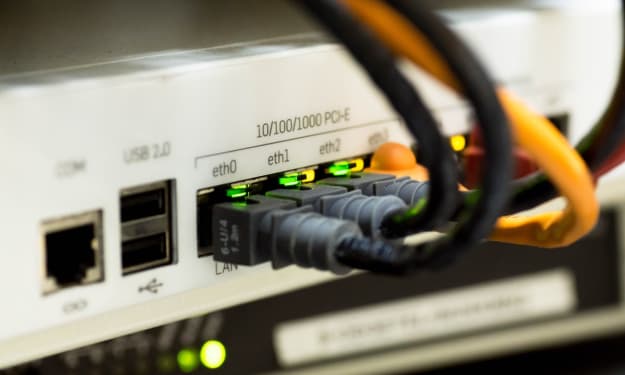Four Groundbreaking Devices That Started Today's Tech Revolution
The technology we depend on today has roots in a variety of groundbreaking devices that came to market over the last 50 years. Here's a list of the four most important among them.

These days, the average person is walking around with a smartphone in their pocket that makes a room-sized mainframe of 30 years ago seem like little more than a calculator. That speaks to the insanely quick evolution of technology in the modern world and how much we've all come to depend on the latest and greatest in tech gadgetry in our daily lives.
Before all of the modern iterations of today's tech toys, however, there were years of devices that broke new ground and set new standards that would evolve into some of the most critical technologies we use today. Some were sensations right from the beginning, while others would turn out to be too far ahead of their time to gain any market traction. The one thing they all had in common was that they represented bold new ideas that changed the way we all lived. Here's a look at the top four groundbreaking devices that led to today's modern, tech-fueled world.
Super 8 Film Cameras
Today, our aforementioned smartphones make it possible to record and share high-definition video on the go whenever we want. The cameras in our phones are just the latest in a long line of equipment that has enabled a home video revolution in all corners of the globe, though. The grandfather of home video as we know it is undoubtedly the Super 8 film camera, which came to market in May of 1965.
Beginning with the Kodak model M2 and M4 cameras, it became possible for anyone to shoot high-quality film footage with no experience and little investment. Super 8 cameras featured sealed film cartridges and even added the ability to record synchronized audio by 1973. They're the direct progenitors of the cameras we all carry around today.
Laserdisc Players
For years, home theater enthusiasts had few options when it came to reproducing the high-quality of actual 35mm film projection. Then a technology appeared that changed everything: The Laserdisc player. Launched for sale by electronics manufacturer Magnavox in 1978, the Laserdisc (then known as DiscoVision) was like the DVDs and Blu-Ray discs we know today, except larger and much less convenient.
Still, with high-quality component video and BNC connectors for noise-free connection to big-screen TVs and home video projectors, the Laserdisc was light years ahead of the other major home video formats of the time, Betamax and VHS. It produced a resolution of 425 lines, which was unheard of in its day, and the players were produced all the way up until 2009—outlasting even VHS.
The Apple Newton
As of now, the Apple iPhone is one of the most successful handheld computing devices ever made. It wasn't, however, Apple's first foray into handheld computing—not by a long shot. That honor goes to the Apple Newton, which was the original personal digital assistant (PDA), and the spiritual forerunner to the devices we all carry around today. Released in 1993, it was a device that was way ahead of its time, with a near-700-dollar price tag. The Newton featured a touchscreen interface with a stylus and included personal assistant software, not unlike today's Siri on the iPhone. Sadly, some technical hurdles and a lack of real-world applications for the device doomed it from the start, but the idea proved prophetic, as history has shown.
The Diamond Rio PMP300
If you're old enough to remember the birth of the MP3 music revolution, there's a good chance that you remember the original Apple iPod. While it was the iPod that came to dominate the portable music market in the early aughts, it was by no means the first commercially successful portable mp3 player. That honor goes to the Diamond Rio PMP300, which made its debut in 1998 and triggered the digital music revolution we're still living through today.
In fact, the Rio paved the way for devices like the iPod, which in turn led to the multipurpose smartphones we depend on today. In a sense, the Rio represents the moment when the internet started to take over the entertainment industry, merging digital delivery (legal or otherwise) with digital playback and upending the media landscape forever.
What's Coming Next
It's important to note that all of the technologies listed here made their first appearances within the last 50 years, showing how far we've come in so short a time. At the pace that today's technology seems to be progressing, it defies the imagination to even guess where we'll be in another 50 years time. If these venerable tech devices are any indication, we're going to be in for a wild ride filled with new forms of entertainment, convenience, and just plain fun. I can't wait to see it, and I bet you can't either!
About the Creator
Andrej Kovacevic
Tech blogger & Editor @ TechLoot.co.uk






Comments
There are no comments for this story
Be the first to respond and start the conversation.